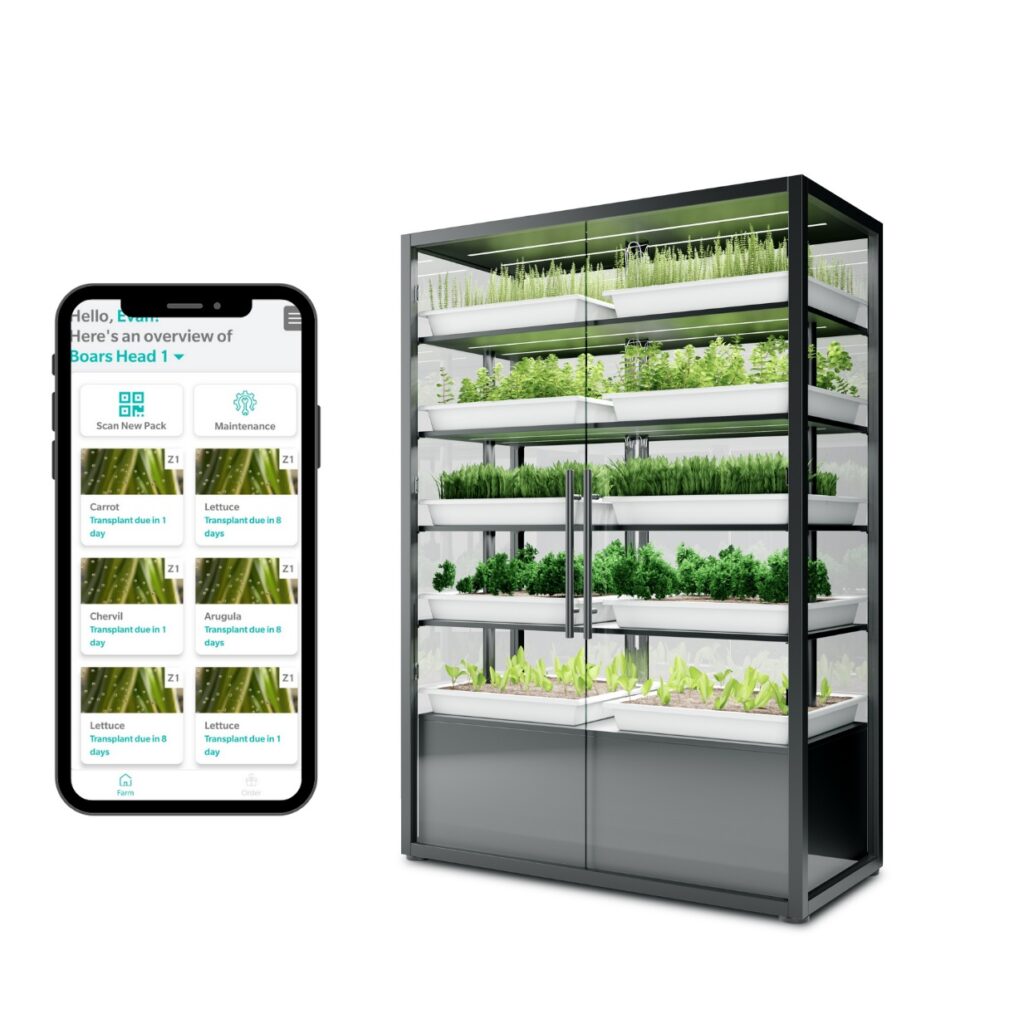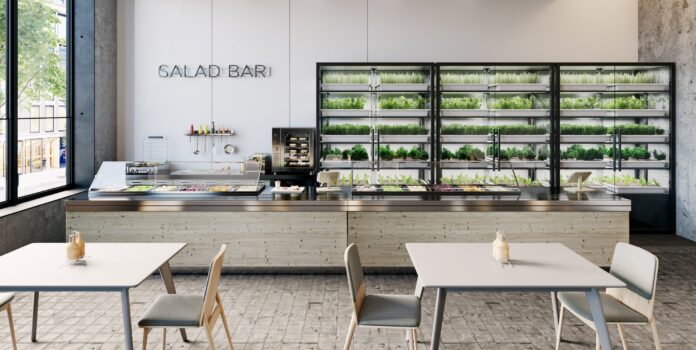
Founders Alexander Olesen and Graham Smith met at the University of Virginia where they first designed a low-cost micro-farm to provide nutritious produce for food-insecure refugees in the Middle East. Alexander and Graham were initially inspired by the desire to bring benefits of sustainable hydroponic farming to those who need it the most. They set out to develop technology that would automate the complex aspects of indoor farming and in doing so make this transformative method of crop production accessible to anyone.
The Babylon Team has expanded this desire to bring hydroponic farming to not only include those in food insecure regions, but also those seeking sovereignty over their own food here at home. Babylon is leveraging their remote management technology to develop a complete indoor farming platform that will power a distributed network of Micro-Farms across North America. We are proud to have partners who share the same vision as us, and we are working towards a healthier future for how food is grown.
…
Simply put, vertical farming means stacking crops on top of one another instead of side-by-side like in conventional farming. This means you can grow more food in a smaller area.
You can also install a vertical farm indoors, so you don’t need an outdoor space to grow fresh vegetables. You can do it inside your restaurant or business, ensuring a constant supply of healthy food for your table.
An indoor hydroponic garden uses soil-less farming, relying instead on a water-based mineral nutrient solution to nourish the plants. Materials like grains, pebbles, bark chips, rice husks, and coconut coir act as the substrate for the plants.
Other types of soil-less vertical gardens use aquaponic or aeroponic growing mediums. Thanks to these carefully regulated sustainable farming practices, you can ensure a steady supply of leafy greens for your culinary business without having to leave the premises.
…
Since vertical farming saves you a trip to the supermarket, it automatically helps reduce your carbon footprint. There are quite a few other sustainable benefits associated with this type of gardening.
…
When a farmer irrigates their crops, a large amount of water ends up in the dead space between the rows of plants. Some of it runs off, and some of it evaporates.
This means farmers use more water to get the same result you could achieve in a closed hydroponic grow system, where every drop of water you use benefits your plants.
How much water does vertical farming save? Studies show that hydroponic farming uses 95% less water than conventional methods.
…
There’s no heavy machinery involved in urban vertical farming, and there’s no road or air transport necessary to get produce to your table. This means no fossil fuels and no exhaust fumes are indirectly involved in this type of farming.
…
Outside pests remain blissfully unaware of your indoor gardening activities, so you’ll never have to use pesticides to protect your crops. Not only is this a more cost-effective way to grow crops, but it’s also a lot safer and healthier too.
…
Adverse weather conditions can wreak havoc on crops grown outdoors. Incidents like drought, flooding, and storms can damage or destroy crops, leading to shortages and high prices. Ideally, everyone would have food sovereignty and be able to maintain access to healthy food sources.
Indoor cultivation remains unaffected by these factors related to climate change, and doesn’t contribute to them either. With an indoor micro-farm and controlled environment, you’re sure to have a constant supply of fresh produce no matter what the weather brings.
As a result, vertical farms yield about 133 times as much food per square foot as their outdoor counterparts.
Source: https://www.babylonmicrofarms.com/
Analysis:
Bablyon micro-farms, offers an innovative way of creating access to freshly grown food. Through the use of hydroponic technology coupled with vertical indoor farming, these micro-farms could offer a unique vision for the future of food systems. Instead of a highly centralized production systems, or even decentralized small farmers, you have an individualized system that is self-sufficient and dependent only on users (and Babylon Micro-farms).
However, while the idea of indoor hydroponic gardening is interesting, the feasibility of integrating it world-wide comes into question. How easy would it be for this technology to be widely dispersed? How would cost factor into it? Where do the materials come from to make it? It offers massive improvements to the sustainability of traditional farming but Is its production lifecycle also sustainable? It looks like the unit may be made of steel, or some kind of metal and glass, how were those created and where were they manufactured?
This business provides valuable insight for my senior thesis moving forward. One key takeaway is the value of potentially disruptive modes of farming through new technology. This business questions the notion of what farming is and can be. Additionally, the partnering of digital product and physical technology to create a cohesive system is an interesting experience to further explore.




